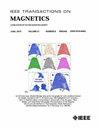Lithography Optimization With Artificial Intelligence for Thin Film Device Fabrication
IF 2.1
3区 工程技术
Q3 ENGINEERING, ELECTRICAL & ELECTRONIC
引用次数: 0
Abstract
In industrial production of thin film sensors, developing a new device can require time-consuming and expensive tests. These devices are characterized by a set of key performance indicators (KPIs) tailored to the device’s intended application. One of the critical design parameters to tune is the geometry of the sensing element, which is controlled through the lithography process. This work explores the use of machine learning (ML) algorithms and inverse analysis to find the optimal mask aligner (MA) lithography parameters (LPs) to obtain a desired pattern. First, an ML model is used to predict what pattern shape is obtained from a set of LPs. This model is then used by a search algorithm to find the LPs which lead to the shape closest to the one desired. The best model displayed an基于人工智能的光刻优化薄膜器件制造
在薄膜传感器的工业生产中,开发一种新设备可能需要耗时且昂贵的测试。这些设备的特点是一组针对设备的预期应用量身定制的关键性能指标(kpi)。需要调整的关键设计参数之一是传感元件的几何形状,这是通过光刻工艺控制的。这项工作探索了机器学习(ML)算法和逆分析的使用,以找到最佳掩模对准器(MA)光刻参数(lp),以获得所需的图案。首先,使用ML模型来预测从一组lp中获得的模式形状。然后使用搜索算法来找到最接近所需形状的lp。最佳模型显示$R^{2}$值为0.85,足以返回一组在洁净室验证的lp,获得高质量的$2 \ × 10 \;\mu \text {m}^{2}$省略。
本文章由计算机程序翻译,如有差异,请以英文原文为准。
求助全文
约1分钟内获得全文
求助全文
来源期刊

IEEE Transactions on Magnetics
工程技术-工程:电子与电气
CiteScore
4.00
自引率
14.30%
发文量
565
审稿时长
4.1 months
期刊介绍:
Science and technology related to the basic physics and engineering of magnetism, magnetic materials, applied magnetics, magnetic devices, and magnetic data storage. The IEEE Transactions on Magnetics publishes scholarly articles of archival value as well as tutorial expositions and critical reviews of classical subjects and topics of current interest.
 求助内容:
求助内容: 应助结果提醒方式:
应助结果提醒方式:


